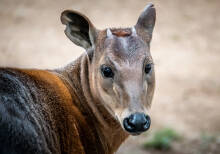
Cephalophus silvicultor
Cephalophus silvicultor,Yellow-backed antelope,
Yellow-backed Duiker (scientific name: Cephalophus silvicultor) English: Yel···
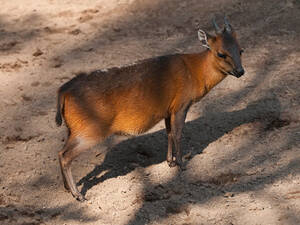
Cephalophus rufilatus
Cephalophus rufilatus
Red-flanked Duiker (scientific name: Cephalophus rufilatus) is called Red-fl···
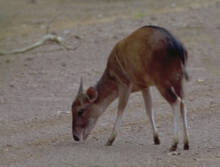
Cephalophus ogilbyi
Cephalophus ogilbyi,Ehrlich's Muntjac
Ogilby's Duiker (Cephalophus ogilbyi) is known as Ogilby's Duiker in···
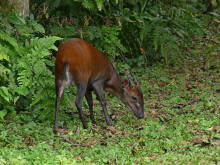
Cephalophus nigrifrons
Cephalophus nigrifrons
Black-fronted Duiker (scientific name: Cephalophus nigrifrons) English: Blac···
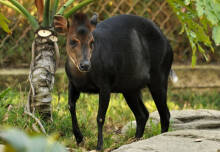
Cephalophus niger
Cephalophus niger
Black Duiker (scientific name: Cephalophus niger) is called Black Duiker in ···
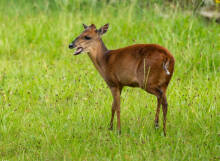
Cephalophus natalensis
The Red Duiker (Cephalophus natalensis) is the only red duiker in its range;···
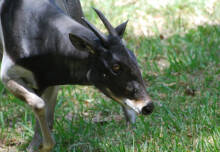
Cephalophus jentinki
Cephalophus jentinki,Jane's gazelle, Long-headed gazelle
Jentink's duiker (scientific name: Cephalophus jentinki) is called Jenti···
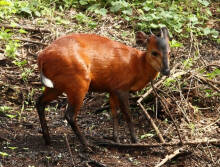
Cephalophus harveyi
Cephalophus harveyi,Harbour's gazelle
Harvey's Duiker (scientific name: Cephalophus harveyi) English: Harvey&#···
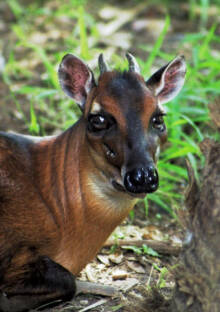
Cephalophus dorsalis
Cephalophus dorsalis,Bay Duiker, Céphalophe bai、Céphalophe à bande dorsale noire, Duiquero Bayo,Schwarzrückenducker,Black-backed antelope, Gulf antelope
Bay Duiker (scientific name: Cephalophus dorsalis) English: Bay Duiker, Fren···
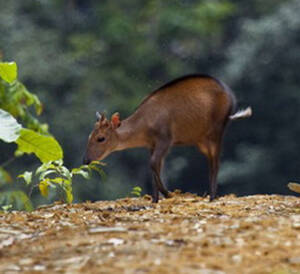
Cephalophus callipygus
Cephalophus callipygus
Blue-rumped duiker (scientific name: Cephalophus callipygus) English: Peters···
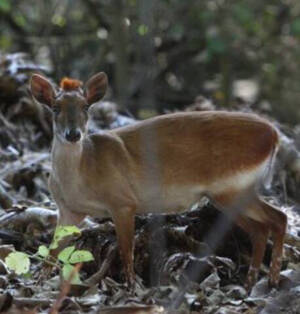
Cephalophus adersi
Cephalophus adersi,Ehrlich's duiker, Sang Island duiker
Cephalophus adersi (English: Aders' Duiker, German: Aders-Ducker, Adersd···
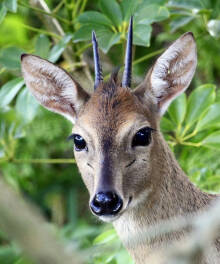
Philantomba walteri
Philantomba walteri,Walter's Gazelle, Walter's Gazelle
Walter's Duiker (scientific name: Philantomba walteri), foreign name Wal···
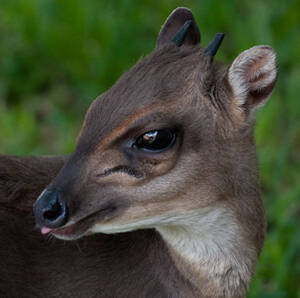
Philantomba monticola
Blue Duiker (scientific name: Philantomba monticola) is also known as Blue D···
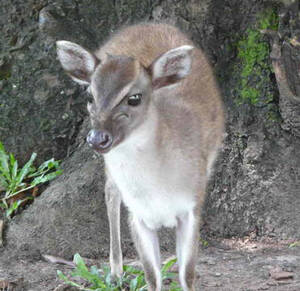
Philantomba maxwellii
Philantomba maxwellii,Macartney's gazelle, Macartney's gazelle
Brown duiker (scientific name: Philantomba maxwellii) English Maxwell's ···
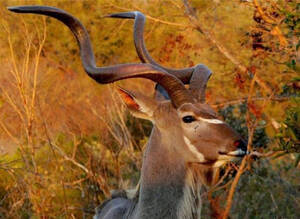
Tragelaphus strepsiceros
Tragelaphus strepsiceros,Greater kudu, Greater scimitar-horned antelope, Greater kudu, African kudu, Greater kudu
Tragelaphus strepsiceros (scientific name: Greater Kudu) has four subspecies···
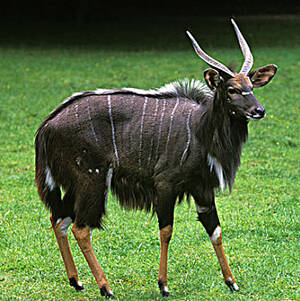
Tragelaphus spekii
Tragelaphus spekii
Sitatunga (scientific name: Tragelaphus spekii) is also known as Sitatunga a···
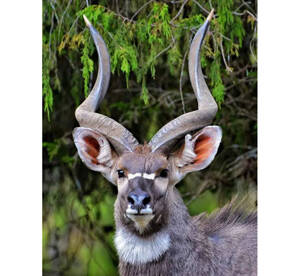
Tragelaphus scriptus
Tragelaphus scriptus,bush antelope
Bushbuck (scientific name: Tragelaphus scriptus) is also known as Bushbuck i···
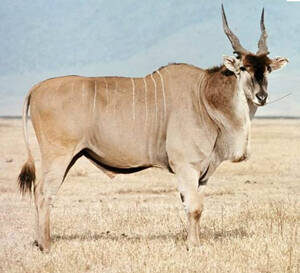
Tragelaphus oryx
Tragelaphus oryx,Eland antelope, Eland antelope, Eland antelope
Common Eland (scientific name: Tragelaphus oryx) is also known as Common Ela···
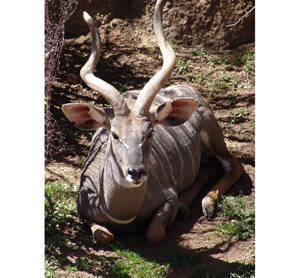
Tragelaphus imberbis
Tragelaphus imberbis
Lesser Kudu (scientific name: Tragelaphus imberbis) is also known as Lesser ···
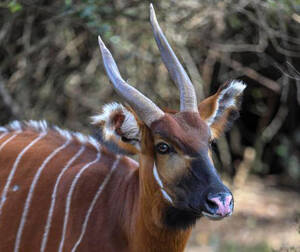
Tragelaphus eurycerus
Tragelaphus eurycerus
There are two subspecies of the eurycerus (scientific name: Tragelaphus eury···
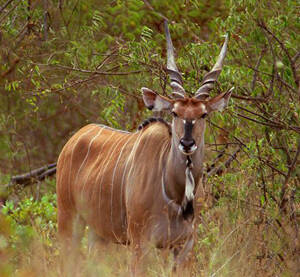
Tragelaphus derbianus
Tragelaphus derbianus
Giant Eland (scientific name: Tragelaphus derbianus) has two subspecies.Gian···
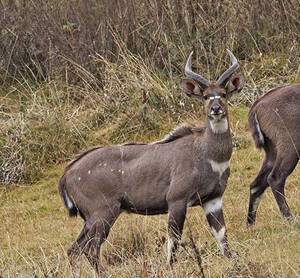
Tragelaphus buxtoni
Tragelaphus buxtoni,mountain antelope, mountain antelope, alpine antelope, mountain antelope
Mountain Nyala (scientific name: Tragelaphus buxtoni) is called Mountain Nya···
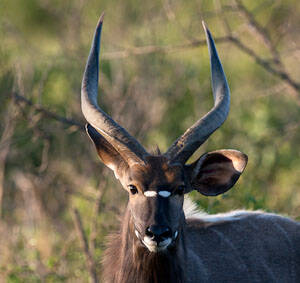
Tragelaphus angasii
Tragelaphus angasii,White-striped antelope, white-spotted antelope, East African bushbuck, Anders's bushbuck, African bushbuck, Nyala bushbuck
Lowland Nyala (scientific name: Tragelaphus angasii) is called Lowland Nyala···
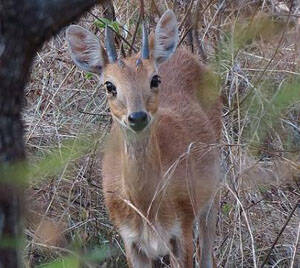
Tetracerus quadricornis
Tetracerus quadricornis
There are three subspecies of Tetracerus quadricornis.Tetracerus quadricorni···
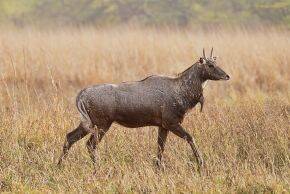
Boselaphus tragocamelus
Boselaphus tragocamelus,blue antelope, blue scimitar-horned antelope, Indian antelope, blue bull
Bluebuck (scientific name: Boselaphus tragocamelus) is called Nilgai, Bluebu···
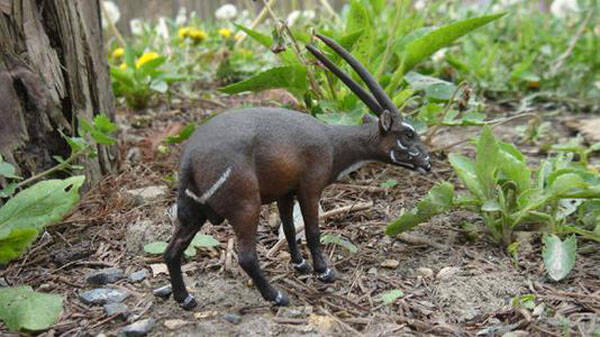
Pseudoryx nghetinhensis
Pseudoryx nghetinhensis,Annamite antelope, Asian unicorn, Asian unicorn, Wuguang cattle, sword-horned cattle, Saura antelope
The Saola (scientific name: Pseudoryx nghetinhensis), also known as Wu Guang···
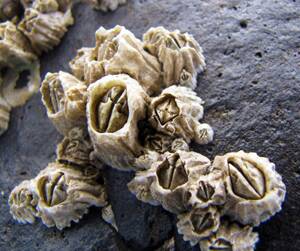
Balanus
Balanus,Touch, horse teeth, oyster soup
There are more than 500 species of barnacles (scientific name: Balanus), and···
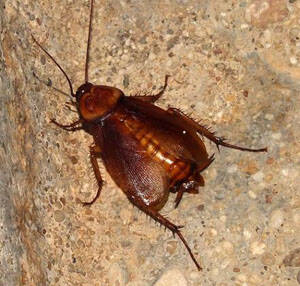
Blatta orientalis
Blatta orientalis,Oriental cockroach, Blatta orientalis
The Oriental cockroach (scientific name: Blatta orientalis) is the largest c···
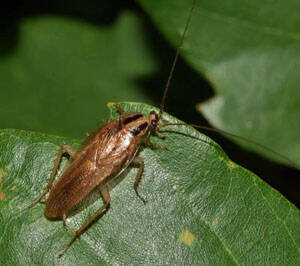
Blattella germanica
Blattella germanica,German cockroach, German cockroach, Blattella germanica
German cockroach (Blattella germanica) is the most widely distributed and mo···
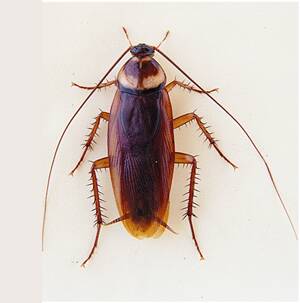
Periplaneta americana
Periplaneta americana,Red cockroach, ship cockroach, cockroach
The American cockroach is scientifically named Periplaneta americana, and is···
